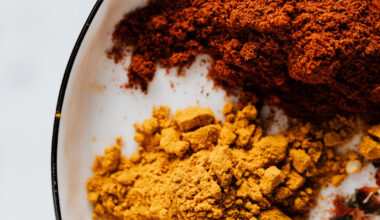
Golden Star, also known as Chrysogonum virginianum, is a vibrant and stunning flowering plant that can add a touch of beauty to any garden or landscape. With its vibrant yellow flowers and lush green foliage, it is a popular choice among gardeners and plant enthusiasts. However, caring for and growing Golden Star requires expertise and knowledge to ensure it thrives and sheds stunning blooms.
In this article, we will share valuable insights and expert advice on caring for and growing Golden Star successfully. From choosing the right location and soil conditions to watering, fertilizing, and pruning techniques, we will cover everything you need to know to ensure your Golden Star thrives.
Overview of Golden Star (Chrysogonum virginianum)
| Common Name | Golden star, green-and-gold |
| Botanical Name | Chrysogonum virginianum |
| Plant Type | Herbaceous Perennial |
| Mature Height | 6-8 inches |
| Sun Exposure | Partial Sun to Light Shade |
| Soil Type | Well-Draining, Sandy, Clay |
| Bloom Period | Spring, Summer, and Autumn |
| Flower Color | Vibrant Yellow |
| Native to | Eastern United States |
Golden Star, a perennial groundcover plant belonging to the Asteraceae family, is a delightful native flowering plant found in various parts of the eastern United States, including Florida and Louisiana. This ground cover plant is well-suited for shade gardens, thriving in areas with sun or shade. It’s a low-maintenance beauty, perfect for native plant gardens and landscapes with well-drained soils.
What sets Golden Star apart is its semi-evergreen nature, which means it retains its green leaves even during the winter months. Their dense golden discs are truly showy and provide winter interest, especially in areas with mild winters. Also, Golden Star can tolerate drought conditions and are generally resistant to pests. However, they may suffer from fungus diseases if the soil is poorly drained or mulch is too thick.
Furthermore, these green and gold plants are often found in forest edges and clearings with bright, filtered light, rather than in densely shaded interiors. They are even indigenous to mesic to dry woodlands, including open rocky woodlands. From late spring through summer, this hardy plant bursts into life, adorning your garden with bright yellow blossoms resembling tiny, radiant discs that bring a vibrant splash of color to any garden, making it a sophisticated choice for your outdoor space.
Is Golden Star Easy to Care For?
Golden Star is generally considered easy to care for due to its adaptability and low-maintenance requirements. This perennial ground cover thrives in various conditions, including partial to full shade and well-draining soil. Once established, it requires minimal attention, with only occasional watering during dry spells.
Golden Star’s compact growth habit helps suppress weeds, reducing the need for constant weeding, and it rarely suffers from severe pest or disease issues. Additionally, it is a relatively slow grower, so it doesn’t require frequent pruning or maintenance. Overall, its ability to thrive in various environments and its low-demand nature make Golden Star a hassle-free choice for many gardeners.
How to Care and Grow Golden Star (Chrysogonum Virginianum)

Choosing the Right Location for Golden Star
When selecting a location for your Golden Star plants, choosing a spot that receives part shade to full shade is crucial. The plant prefers to grow in areas with filtered sunlight or dappled shade. Avoid planting it in areas with full sun, as this can cause the leaves to burn and the plant to wilt. Additionally, Golden Star thrives in woodland gardens or shady landscapes where it can benefit from the natural protection provided by surrounding trees or taller plants.
Soil Requirements for Chrysogonum Virginianum
Golden Star thrives in soil conditions that are not only well-drained but also enriched with organic matter. Aim for soil that strikes a balance between moisture retention and drainage to provide the ideal growing environment. While Golden Stars prefer consistently moist soil, it’s crucial to prevent waterlogged conditions, which can harm their health.
To meet these requirements, consider amending your soil with generous amounts of organic matter, such as compost or peat moss. This organic matter not only enhances the soil’s fertility but also improves its structure. It creates a looser, more friable soil texture that allows water to drain freely while retaining essential moisture for the plants.
Planting Golden Star
Planting Golden Star is a straightforward process that begins with acquiring healthy specimens from nurseries or garden centers. Once your plants are ready for planting, it’s essential to consider spacing for optimal growth and spread. Allocate about 12 to 18 inches between each Golden Star plant to ensure they have ample room to develop into lush groundcovers.
To plant Golden Stars, start by digging a hole slightly larger than the plant’s root ball. Carefully remove the plant from its container, being mindful not to damage the roots. Place the plant in the hole at the same depth as the container, ensuring the top of the root ball is level with the soil surface.
Next, backfill the hole with soil, gently tamping it down as you go to eliminate any potential air pockets around the roots. Properly settling the soil prevents issues like root drying or poor establishment. After planting, give your Golden Stars a thorough watering to help the soil settle further and to encourage root development.
Watering Chrysogonum Virginianum
Golden Star requires regular watering to maintain its moisture needs. It prefers moist soil, but not soggy conditions. Water the plants deeply during dry periods once or twice weekly to ensure the root system receives adequate moisture. Be careful not to overwater, as excessive water can lead to root rot and other fungal issues. Remember, it’s often better to water deeply and less frequently than lightly and frequently, as it encourages the roots to establish a more robust, drought-resistant system.
Fertilizing Golden Star
Golden Star is a low-maintenance plant that generally does not require frequent fertilization. However, you can apply a slow-release balanced fertilizer in early spring to promote healthy growth and abundant blooms. Follow the manufacturer’s instructions for application rates and methods. Avoid over-fertilizing, as this can result in excessive foliage growth at the expense of flower production. By adhering to these watering and fertilizing practices, you’ll help your Golden Stars flourish while maintaining a thriving and visually captivating garden.
Pruning and Dividing Chrysogonum Virginianum
Golden Star typically does not require extensive pruning. However, you can trim any dead or damaged foliage throughout the growing season to maintain a neat appearance. Additionally, if the plants become overcrowded or spread beyond their desired boundaries, you can divide them in early spring or fall when they are dormant. Dig up the clumps and carefully separate them into smaller sections, ensuring each division has roots and healthy foliage. Replant the divisions in well-prepared soil and water thoroughly to promote root establishment.
Propagating Chrysogonum Virginianum
Golden Star can be propagated through seeds or division. To propagate from seeds, collect the seeds after the flowers have faded and the seed heads have dried. Sow the seeds in seedling trays or pots filled with a well-draining seed-starting mix. Keep the soil consistently moist and place the containers in a warm location with indirect sunlight. The seeds should germinate within a few weeks.
Once the seedlings have developed a few sets of true leaves, they can be transplanted into individual pots or the garden. Remember, the best time to propagate Golden Star is in early spring or fall when the plants are not actively growing. This allows the divisions or newly germinated seedlings to establish themselves before the onset of harsh weather conditions.
Common Issues and Pests
Disease Issues for Chrysogonum Virginianum

Disease problems are typically not a significant concern regarding Golden Star (Chrysogonum virginianum). However, it’s essential to be aware of potential issues and take preventive measures to maintain the health of your plants. One primary concern is the risk of root rot and other fungal diseases, which can occur if the soil remains consistently waterlogged.
To safeguard your Golden Stars, it’s crucial to ensure they are planted in well-drained soils. Amending the soil with organic matter, as mentioned previously, can improve drainage and reduce the risk of waterlogged conditions. Additionally, vigilant watering practices are key—avoid overwatering, as excess moisture can create a favorable environment for fungal growth.
Pest Problems for Golden Star
While Golden Star is generally considered a low-maintenance and pest-resistant plant, it may encounter occasional challenges from common garden pests like snails and slugs. These pests can nibble on the foliage, leaving unsightly holes and affecting the plant’s overall appearance.
To mitigate the potential damage caused by snails and slugs, consider implementing natural and eco-friendly pest control methods. Organic slug control options, such as diatomaceous earth or iron phosphate-based baits, can effectively deter these pests without harming the environment.
Another strategy is to create physical barriers around your Golden Star plants. When encircling the plants or garden beds, copper tape creates a mild electrical charge that deters snails and slugs from crossing. This barrier can be an effective means of protecting your Golden Stars from these common garden nuisances.
Dealing with Weeds in Your Golden Star Plants
Maintaining a weed-free environment around Golden Star plants is crucial for their healthy growth and appearance. Weeds can compete with your Golden Stars for essential resources like water, nutrients, and sunlight. Here are effective ways to deal with weeds in your Golden Star planting area:
1. Manual Weeding: Regularly inspect the area around your Golden Star plants and manually remove any weeds that appear. Be sure to pull them up by the roots to prevent regrowth. This hands-on approach is practical for small-scale weed control.
2. Mulch: Applying a layer of organic mulch around the base of your Golden Star plants is an excellent strategy to suppress weed growth. Organic mulch, such as wood chips, straw, or shredded leaves, helps conserve soil moisture, regulate temperatures, and create a barrier inhibiting weed emergence. Ensure the mulch layer is thick enough (usually 2-3 inches) to smother weeds effectively.
3. Weed Fabric or Landscape Fabric: Consider using weed or landscape fabric in your planting area. These materials can be placed beneath the mulch to provide a weed barrier. They allow water and air to penetrate while blocking weeds from taking root.
4. Pre-Emergent Herbicides: If you’re dealing with persistent weed problems, use pre-emergent herbicides designed for ornamental plant beds. These products create a barrier in the soil that inhibits weed seed germination.
5. Regular Maintenance: Weed control is an ongoing process. Make it a part of your regular garden maintenance routine to inspect, remove, and refresh mulch to keep weeds at bay.
Importance of Caring for Golden Star Plants
Caring for Golden Star plants is essential for multiple reasons. These native plants are vital for local ecosystems, providing nectar and pollen for essential pollinators such as bees and butterflies. By nurturing them in our gardens, we actively contribute to biodiversity and help maintain the overall health of natural habitats. Additionally, Golden Stars’ captivating yellow flowers and lush green foliage enhance the visual appeal of any garden or outdoor space.
Proper care ensures their continued vibrancy and their role in beautifying landscapes. These plants are also valuable for their shade tolerance and ground cover qualities, aiding soil stabilization and erosion control. Lastly, caring for Golden Stars aligns with sustainable gardening practices, promoting the use of native species, conserving water, and reducing the need for chemical inputs, thus fostering a more eco-friendly and resilient garden environment.
Creative Landscaping Ideas Using Golden Star (Chrysogonum Virginianum)
Rock Garden Highlight: Incorporate Golden Stars into a rock garden design. The low-growing foliage will contrast beautifully with the rugged texture of the rocks, creating an eye-catching display. Plant them around larger rocks and boulders for a natural, wild look.
Under Trees and Shrubs: Plant Golden Stars under the canopy of more giant trees or beneath shrubs. Their shade tolerance makes them ideal for filling in the often barren ground beneath these larger plants, providing an attractive ground cover.
Butterfly and Pollinator Garden: Create a butterfly and pollinator-friendly garden by planting Golden Stars alongside other nectar-rich flowering plants. The bright yellow flowers will attract bees, butterflies, and other pollinators, enhancing the biodiversity of your outdoor space.
Terraced Garden: If you have a terraced garden, use Golden Stars to cascade down the terraces, creating a cascading effect with their lush foliage and vibrant flowers.
Edging for Water Features: Use Golden Stars to edge the perimeter of a pond, water feature, or a small creek in your garden. The reflection of their yellow blooms on the water’s surface will create a serene and picturesque scene.
Container Gardens: Plant Golden Stars in large containers or decorative pots. This allows you to move them around your garden to add seasonal color wherever needed. Consider mixing them with other complementary plants like ornamental grasses or ferns.
Woodland Garden: If you have a shaded woodland area, Golden Stars can thrive there, adding a burst of color to the otherwise dark and green surroundings. Pair them with native ferns and hostas for a natural woodland aesthetic.
Wildflower Meadow: Integrate Golden Stars into a wildflower meadow for a more naturalistic and informal garden. Their bright blooms will blend beautifully with other native wildflowers.
Stepping Stone Pathway: Plant Golden Stars around stepping stones to create a whimsical and inviting pathway through your garden. This not only adds visual interest but also makes for a delightful walking experience.
Vertical Gardens: Incorporate Golden Stars into vertical garden designs, such as living walls or vertical planters. Their trailing growth habit can be harnessed for a unique and space-saving garden feature.
Final Thoughts
In conclusion, cultivating and nurturing Golden Star (Chrysogonum virginianum) can be a rewarding experience for any gardening enthusiast. By following these expert tips for care and growth, you can unlock the full potential of this charming plant, leading to stunning blooms that will enhance the beauty of your garden.
Remember to provide the right conditions, including well-drained soil, partial shade, and regular watering. Additionally, periodic pruning and maintenance will keep your Golden Star thriving year after year. With dedication and attention to detail, you can enjoy the vibrant, golden blossoms of this native perennial and create a garden that truly stands out.
For more lovely articles like this, subscribe to our community at the Family Hint today!




